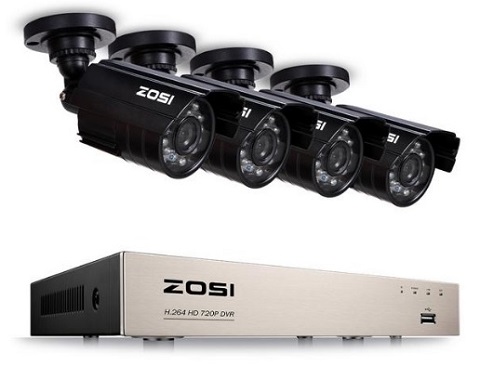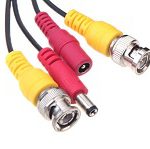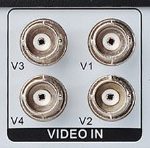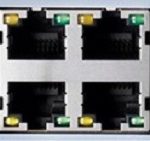Are you thinking about getting one of those cheap home camera system to keep an eye on things around the house, but getting overwhelmed trying to make sense of them all? Here’s a very basic and broad overview to help you sort between the different general types and understand some of the basics of what you’re looking at. I’m only covering complete wired systems today. Wireless camera systems come with their own set of differences and problems, and I’ll talk about those some other time.
Analog Camera Systems
As the least expensive option, these are very tempting because you can find complete home security camera kits that come with almost everything you need to get up and running for an extremely low price. There are several kits available that come with four cameras, a DVR (Digital Video Recorder) to store recorded video, cables, accessories, and everything else you need except for a hard disk drive and a display selling for well under $100. Hard drives and displays are also really inexpensive now, and you might even have some old ones laying around that you can use. Four camera systems for the price of what one analog camera used to cost, but there’s a reason the price of these is so low now. They use the older analog technology, and megapixel IP camera systems have been getting better and dropping in price too, slowly making these analog ones obsolete. Still, these super cheap ones might be a good choice for some people, as long as you know what you’re getting, and what you’re not.
How do you know that you’re looking at this older analog CCTV technology?
One sure way to tell it’s analog is that the cameras will connect to the DVR with 75 Ohm coaxial cable using BNC connectors. The cameras will also get 12 Volt DC power over a separate wire pair, usually along side of the video as a siamese cable.
Also, the video resolution will be described with a number of TVL, short for Television Lines. If it’s described as having 600 TVL, 960 TVL, or any number of TVL, it’s the older analog technology. It doesn’t really matter how many megapixels the manufacturer claims are in the camera’s image sensor with these, the signal going out of the camera is still based on the 50+ year old NTSC or PAL analog television standard, depending on the region of the world you’re in, and can never be better than 960H resolution, which is 960×480 (NSTC) or 960×582 (PAL). One exception to this rule is a few IP camera advertisements claiming a huge number of TVL, and it’s just a misleading and meaningless marketing term.
Analog High Definition
But wait, if you look closely you can find higher resolution analog systems at these same low prices! It’s known as AHD (Analog High Definition) and was developed to overcome the poor resolution of legacy CCTV. These give you HD over coaxial cable and are available in 720P (1280 x 720) and even 1080P (1920 x 1080). I have no trouble looking online and finding several different 720P AHD kits with four outdoor weatherproof night vision cameras and a smartphone app for less than $100 shipped. Just add a hard drive and display like the analog kits above. There are other HD analog standards besides AHD such as CVI, SDI, and TVI that we won’t even get into because they cost much more.
The good about analog systems
- They are extremely inexpensive
- The technology is proven and stable
- They are simple to install and set up
The bad about analog systems
- Poor image quality with much lower resolution than IP cameras unless you go with AHD, and those are still lower than the megapixel IP cameras commonly available now
- Limited features with no new development or improvements, it’s at the end of the road and there is no direct upgrade path
- A DVR has a fixed number of ports for cameras, usually 4 in this price range, and they cannot be expanded beyond the number that they come with.
Final thoughts on analog camera systems
If you don’t need to view objects far away from the cameras, don’t need a high amount of detail, and you want to spend the absolute least amount of money possible, these might be a good deal. Just be aware that it’s planned obsolescence when buying these, and new replacement parts will likely be unavailable one day as the technology is phased out.
Beyond Analog – IP Network Camera Systems
The step above analog takes us to IP (Internet Protocol) network
camera systems. These abandon the old coaxial cable and are connected with standard Ethernet network cables. The cameras receive power over this same network cable using PoE (Power over Ethernet).
Complete basic 720P kits with four IP cameras and NVR (Network Video Recorder) start at less than $200, or around twice the price of a comparable analog system, which is still very affordable for most people. These entry level kits look similar to the analog ones available, but the technology inside is newer and much different. There is a wide selection of these kits from many manufacturers, and as you might expect, the price of the kits rise as you increase the camera resolution and add features.
You must be careful when choosing a complete kit though. Some NVR and camera systems are proprietary and you can’t mix and match different brands with them, and others like Zmodo use their own sPoE instead of the industry standard PoE. With systems like that you are locked into using parts from that one manufacturer. Also, like the analog DVRs, these NVRs come with a fixed number of ports, and frequently cannot be expanded beyond what comes in the kit.
Pros of complete IP camera NVR kits
- Current technology with more features than analog
- High resolution systems available
- Compatible parts from one manufacturer
Cons of complete IP camera NVR kits
- Some components may be proprietary, restricting replacement or expansion
- May be more complex than analog to setup
- Frequently limited to what comes in the kit with no customization possible
Designing and building your own system from scratch
Complete surveillance system packages are very popular and usually meet the needs of many homeowners, but you do have to work with whatever components come in the kit. You get a certain camera body style, lens, viewing angle, etc. and must use it with no customization. No two installations are the same though, and the best home camera system is one that’s designed around a specific location and the people who will be using it. Selecting individual IP cameras and a video management system that best meets your specific needs always provides the best solution, but it removes the simplicity and guaranteed compatibility of buying a complete boxed system. With a custom system you can keep it as simple as you want or go to whatever level fits your budget, and that’s what I’ll primarily write about in future articles. Admittedly though, the higher end IP camera kits and some custom solutions are beyond the point of being called a cheap home camera system.





